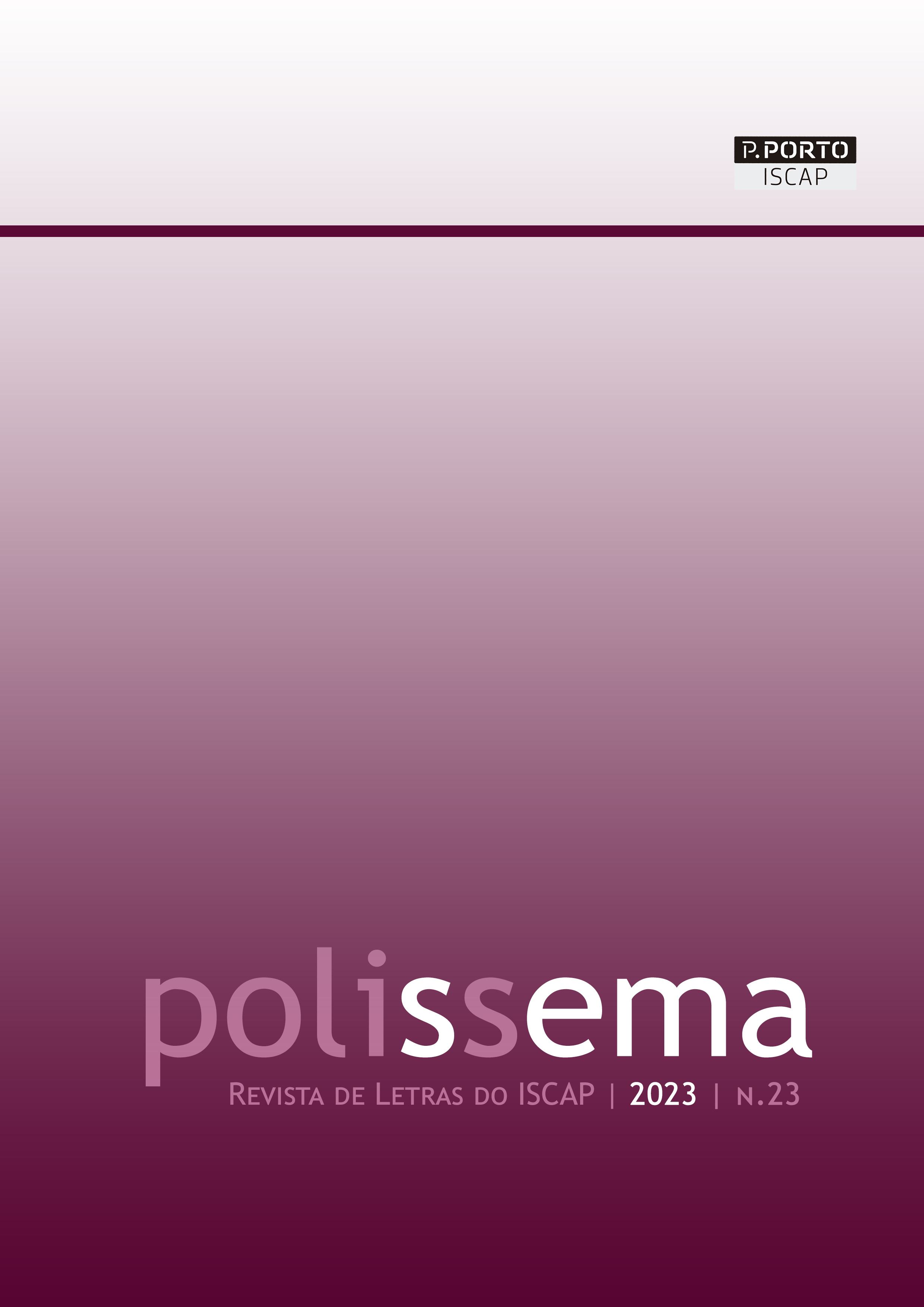DEMONSTRATIVES THIS AND THAT IN MANSFIELD’S THE FLY AND IN BRAZILIAN PORTUGUESE TARGET TEXTS
DOI:
https://doi.org/10.34630/polissema.v1i23.5016Keywords:
translation studies, demonstratives this and that, storiesAbstract
Abstract
The demonstratives this and that “refer to the location of something; typically some entity – person or object – that is participating in the process” (Halliday & Hasan, 1976, p. 58). This paper aims to describe these categories in a small corpus – namely, the short story The fly, by Katherine Mansfield (2001) and two of its translations into Brazilian Portuguese, one by the translator duo Carlos Eugênio Marcondes de Moura and Alexandre Barbosa de Souza (Mansfield, 2005), and the other by translator Denise Bottmann (Mansfield, 2016). The corpus was scanned, converted into DOCX, and proofread several times. The linguistic software AntConc was used on the source text to generate concordance lines with the categories this and that as KWIC (Key Words in Context). Then, these concordance lines were aligned manually with their counterparts in the translations. The quantification of the demonstratives in the source text was done through the linguistic software, whereas the quantification of these categories in the target texts was done manually. Results show that the source text has more demonstratives this and that than the target texts. Results show also that the demonstratives this and that are realised more frequently in the target text Mansfield (2005) than in the other target text Mansfield (2016). It can be concluded that such differences may be due to the linguistic systems involved and the translators’ stylistic features.
References
Anderman, G. (2007). Linguistics and translation. In Kuhiwczak, P.; Littau, K. (ed.). A companion to translation studies. Multilingual Matters LTD, 45-62.
Anthony, L. (2022). AntConc Homepage. http://www.laurenceanthony.net/software/antconc/
Berber Sardinha, T. (2004). Visão geral da Linguística de Corpus. In Berber Sardinha, T. Linguística de Corpus. Manole, 1-43.
Bottmann, D. (2012). Katherine Mansfield. http://kathmansfield.blogspot.com
Blum-Kulka, S. (2004). Shifts in cohesion and coherence in translation. In Venuti, L. (ed.). The translation studies reader. Routledge, 298-313.
Cavalcante, M. M. (2002). O demonstrativo e seus usos. PERSPECTIVA, 20(1), 157-181. https://doi.org/10.5007/%25x
Galembeck, P. T. (2012). Os pronomes demonstrativos no português culto (falado e escrito) de São Paulo e do Rio de Janeiro. SIGNUM: Estud. Ling., 15(1), 151-167. http://dx.doi.org/10.5433/2237-4876.2012v15n1p151
Halliday, M. A. K. (1978). Language as a social semiotic: the social interpretation of language and meaning. Edward Arnold.
Halliday, M. A. K. (1994). An introduction to functional grammar. 2 ed. Edward Arnold.
Halliday, M. A. K.; Hasan, R. (1976). Cohesion in English. Longman.
House, J. (2001). How do we know when a translation is good? In Steiner, E.; Yallop, C. (ed.). Exploring translation and multilingual text production: beyond content. Mouton de Gruyter, 2001. p. 127-160.
Jakobson, R. (2007). Aspectos lingüísticos da tradução. In Jakobson, R. Lingüística e comunicação. Translation by Izidoro Blikstein and José Paulo Paes. Cultrix, 63-72.
Koch, I. V. (2000) A coesão textual. Contexto.
Malmkjaer, K. (2004). Translational Stylistics: Dulcken’s translations of Hans Christian Andersen. Language and Literature, 13(1), 13-24. http://dx.doi.org/10.1177/0963947004039484
Mansfield, K. (2001). Foreword. In Mansfield, K. The collected stories. Penguin Books.
Mansfield, K. (2001). The fly. In Mansfield, K. The collected stories. Penguin Books, 412-418.
Mansfield, K. (2005). A mosca. In Mansfield, K. Contos. Translation by Carlos Eugênio Marcondes de Moura and Alexandre Barbosa de Souza. Cosac Naify, 258-265.
Mansfield, K. (2016) A mosca. In Mansfield, K. Os melhores contos de Katherine Mansfield. Selection by Guilherme da Silva Braga and translation by Denise Bottmann. L&PM, 174-182.
McEnery, T; Hardie, A. (2012) What is corpus linguistics? In McEnery, T; Hardie, A. Corpus Linguistics: method, theory and practice. Cambridge University Press, 1-24. http://dx.doi.org/10.1017/CBO9780511981395
Neves, J. B. (2022) Processos, participantes e circunstâncias em Oryx and Crake e em sua tradução para o português brasileiro. [MA Thesis]. Universidade Federal de Pelotas.
Pagano, A.; Magalhães, C.; Alves, F. Towards the construction of a multilingual, multifunctional corpus: factors in the design and application of CORDIALL. TradTerm, 10, 143-161. https://www.revistas.usp.br/tradterm/article/view/47160/50881
Pontifícia Universidade Católica de Minas Gerais. (2022). Orientações para elaboração de citações e referências: conforme a American Psychological Association (APA) 7a. edição. Sistema Integrado de Bibliotecas. www.pucminas.br/biblioteca
Sarkar, S. (2022) The fly by Katherine Mansfield: full summary of the short story. https://www.eng-literature.com/2022/09/the-fly-mansfield-summary.html
Scott, J. (2022). Presenting, and Persuading: International Health Sciences Doctoral Candidates’ Research Proposal Presentations. [PhD Thesis] – The University of Adelaide. https://digital.library.adelaide.edu.au/dspace/bitstream/2440/136044/2/Scott2022_PhD.pdf
Vasconcellos, M. L. (2009). Systemic Functional Translation Studies (SFTS): the theory travelling in Brazilian environments. D.E.L.T.A., 25 (ESPECIAL), 585-607. https://doi.org/10.1590/S0102-44502009000300003
Downloads
Published
How to Cite
Issue
Section
License
Copyright (c) 2023 POLISSEMA – ISCAP Journal of Letters

This work is licensed under a Creative Commons Attribution-NonCommercial-NoDerivatives 4.0 International License.


